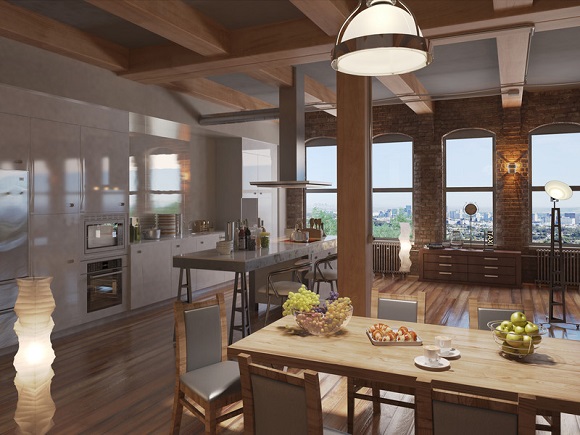Obstacles To Converting Vacant Commercial Properties Into Housing In The Netherlands

Table of Contents
Regulatory Hurdles and Bureaucracy
Navigating the Dutch planning and building permit system for vacant commercial property conversion presents a significant hurdle. The complexity and length of the process often deter potential developers.
Complex Permitting Processes
The application process for obtaining the necessary permits is notoriously arduous, demanding meticulous attention to detail and significant time investment.
- Lengthy application review times: Delays in processing applications can significantly extend project timelines, impacting budgets and overall feasibility.
- Strict adherence to building codes and regulations: Converting commercial spaces to residential units often requires adapting to regulations that differ considerably from those governing residential construction, adding complexity and cost.
- Difficulty obtaining exemptions or variances: Securing necessary exemptions or variances from strict regulations can be a lengthy and challenging process, requiring extensive documentation and justification.
- High administrative fees: The cumulative cost of various application fees, permits, and inspections adds a substantial financial burden to the conversion project.
Zoning Regulations and Land Use Restrictions
Many vacant commercial properties are located in areas zoned exclusively for commercial use. This necessitates a zoning change before residential conversion can even be considered.
- Need for zoning changes: Obtaining a zoning change requires navigating a complex procedure, involving public consultations, potential appeals, and significant time commitment.
- Restrictions on building height, density, and parking requirements: Existing zoning regulations might impose strict limitations on building height, density, and parking provision, potentially constraining the viability of a conversion project.
- Limitations on the type and size of residential units permitted: Zoning regulations might specify the types and sizes of residential units allowed, restricting the overall design and potential revenue generation.
Financial Constraints and Investment Risks
The financial aspects of vacant commercial property conversion in the Netherlands present substantial challenges, often deterring potential investors.
High Conversion Costs
Adapting commercial spaces for residential use necessitates significant renovation and refurbishment. The costs involved can be substantial and often exceed initial projections.
- Costs of asbestos removal and other environmental remediation: Older commercial buildings may contain asbestos or other hazardous materials, requiring costly and time-consuming remediation efforts before conversion can begin.
- Expense of installing new kitchens and bathrooms: Installing modern, compliant kitchens and bathrooms is a significant expense, adding considerably to the overall conversion costs.
- Upgrades required to meet energy efficiency standards (EPC): Meeting stringent Dutch energy performance standards (EPC) necessitates substantial investments in insulation, heating, and other energy-efficient systems.
Uncertain Return on Investment
The profitability of converting vacant commercial properties is never guaranteed and is influenced by numerous factors. This uncertainty makes securing investment difficult.
- Difficulty in securing financing due to perceived risks: Lenders may be hesitant to provide financing due to the perceived risks associated with such conversions, including potential delays and cost overruns.
- Potential for delays and cost overruns: Unexpected issues during the conversion process can lead to delays and cost overruns, impacting the project’s overall profitability.
- Fluctuations in the housing market: Changes in the housing market can impact rental yields and property values, adding to the investment uncertainty.
Technical Challenges and Practical Limitations
Beyond regulatory and financial hurdles, inherent technical challenges frequently arise during vacant commercial property conversion.
Building Structure and Design
Older commercial buildings might pose significant structural challenges unsuitable for residential occupancy without extensive modifications.
- Issues with load-bearing walls and foundations: Existing load-bearing walls and foundations may not be adequate for residential use, requiring expensive reinforcement or even demolition and rebuilding.
- Inadequate natural light and ventilation: Commercial spaces often lack adequate natural light and ventilation, necessitating significant modifications to ensure a comfortable and healthy living environment.
- Lack of sufficient space for bedrooms and bathrooms: The layout of commercial spaces might not readily accommodate the required number of bedrooms and bathrooms for residential units.
Accessibility and Inclusivity
Converted properties must adhere to stringent accessibility standards to ensure inclusivity for people with disabilities.
- Installation of ramps and elevators: Providing access for wheelchair users might require installing ramps, elevators, or other accessibility features, significantly adding to the conversion costs.
- Modification of bathroom fixtures and doorways: Modifying bathroom fixtures and doorways to meet accessibility standards is crucial but can be expensive.
- Compliance with specific accessibility regulations: Meeting all relevant accessibility regulations is paramount and requires careful planning and execution.
Conclusion
Converting vacant commercial properties into housing in the Netherlands presents a vital solution to the housing crisis, but overcoming significant obstacles is crucial. These include complex regulations, substantial financial investment, inherent structural limitations, and the need for accessibility compliance. Addressing these challenges through collaboration between government agencies, developers, and investors, combined with financial incentives and streamlined regulations, is essential. By proactively tackling these hurdles, the Netherlands can unlock the vast potential of vacant commercial property conversion and make significant strides towards solving its housing shortage. Let’s work together to find innovative solutions for vacant commercial property conversion in the Netherlands.

Featured Posts
-
 Welcome To Wrexham Things To Do And Places To See
May 28, 2025
Welcome To Wrexham Things To Do And Places To See
May 28, 2025 -
 Ayndhwfn Ytwj Blqb Aldwry Alhwlndy Llmwsm 2023 2024
May 28, 2025
Ayndhwfn Ytwj Blqb Aldwry Alhwlndy Llmwsm 2023 2024
May 28, 2025 -
 Nl West Update San Francisco Giants In First Eugenio Suarezs Historic Night Colorado Rockies Slump
May 28, 2025
Nl West Update San Francisco Giants In First Eugenio Suarezs Historic Night Colorado Rockies Slump
May 28, 2025 -
 45 Milyon Euroluk Osimhen Icin Ingiliz Kulueplerinden Yeni Teklifler
May 28, 2025
45 Milyon Euroluk Osimhen Icin Ingiliz Kulueplerinden Yeni Teklifler
May 28, 2025 -
 Merz Approves Ukraines Expanded Military Operations In Russia
May 28, 2025
Merz Approves Ukraines Expanded Military Operations In Russia
May 28, 2025
Latest Posts
-
 Manchester United Apreciacao Ao Talento De Bruno Fernandes
May 30, 2025
Manchester United Apreciacao Ao Talento De Bruno Fernandes
May 30, 2025 -
 Bruno Fernandes O Craque Portugues Nos Elogios Do Manchester United
May 30, 2025
Bruno Fernandes O Craque Portugues Nos Elogios Do Manchester United
May 30, 2025 -
 Manchester United Reconhece A Excelencia De Bruno Fernandes
May 30, 2025
Manchester United Reconhece A Excelencia De Bruno Fernandes
May 30, 2025 -
 Massive Transfer Bid Rejected Man United Star Committed To Old Trafford
May 30, 2025
Massive Transfer Bid Rejected Man United Star Committed To Old Trafford
May 30, 2025 -
 Manchester United Elogia Bruno Fernandes O Magnifico Portugues
May 30, 2025
Manchester United Elogia Bruno Fernandes O Magnifico Portugues
May 30, 2025
